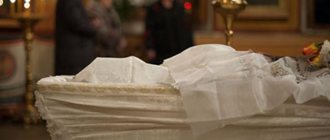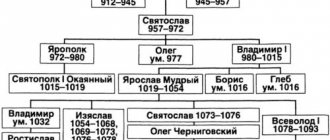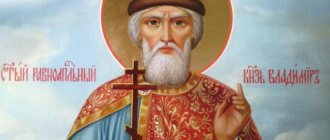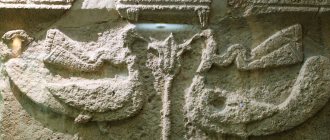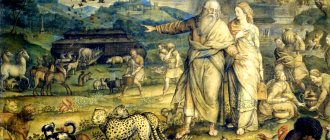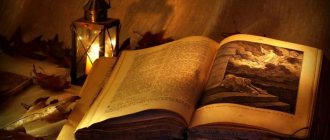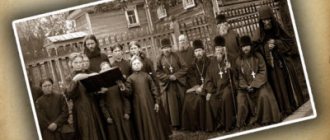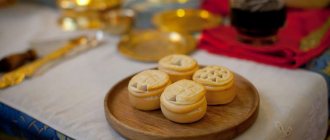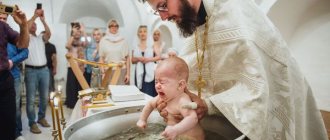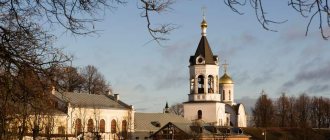I sow, I sow, I sow, I congratulate you on Kolyada.
I sow, I sow, I sow, I wish you happiness and joy. Hello, friends.
While Christmas time is underway, we need to have time to talk about one more traditional ritual - caroling. Have you ever gone to caroling? We went, it was so long ago that I don’t even remember well. I definitely remember that it was fun, and I definitely remember that we almost made fun of the kittens =) But that’s not what we’re talking about today.
I would like to remember this ritual, update the article a little and expand the information slightly. New questions have arisen, answers have been found - I want to share.
What is caroling
Caroling in Rus' is one of the key rituals of one of the four great Slavic holidays - Kolyada.
* Friends, several articles have been written on this site on the topic of winter Slavic holidays, and most likely, they will be of interest to you. Since one holiday is closely related to another:
Karachun Day - winter solstice among the Slavs (2017 and 2018): rituals and traditions. What does Karachun mean?
Kolyada is a holiday of the Slavs, rituals and traditions: how did the Slavs celebrate the New Year?
The tradition is noteworthy in that after the baptism of Rus', it not only did not disappear completely, but also retained many elements from the Slavs.
Of course, due to the overlap of Christian holidays with the Slavic changes, huge changes occurred: from the dates of the celebration of the latter to the distortion of meaning. In principle, this is a natural process in such a situation.
Caroling is an ancient custom, characteristic mainly of the Slavic peoples, during which groups of carolers (usually young people) dressed up as various animals, walked around the courtyards, sang certain (ritual) songs, in short, relaxed and had fun. But all this fun had its own sacred meaning - a call for prosperity, fertility and other positive things and blessings. And of course, people welcomed Kolyada.
The ritual of caroling consisted of a kind of exchange of gifts, gift for gift. The carolers “gave” prosperity to the peasant house for the whole year, and the owners gave them kozulki, as well as pies, cheesecakes, beer, and money.
Christian Caroling.
We have talked so much about the pagan ritual of caroling, we have tried so much to deny Christian customs that the time has come to talk about the latter. Christian caroling takes place on the eve of Christmas. Those who perform carol chants usually gather under the windows of each house. At the same time, the songs notify everyone about the birth of Jesus Christ, and encourage everyone to share this joy with everyone. Moving away from home, carolers wish the residents of the house health and prosperity. In the Christian tradition, it is also customary to give such people gifts and offerings in the form of food.
In Russia to this day there are two rituals of caroling. The first is Vasilievskaya carol. It is also called a rich carol. The eve before the New Year is called Vasilyev's evening in Russia. On this day, it is customary to see off the old year with a richly laid table and fun. Hence the name - rich caroling. The second caroling is Epiphany. It is also commonly called Lenten, and is celebrated before the Feast of Epiphany.
It has long been customary to celebrate the arrival of Christmas with all sorts of good deeds. So, for example, in the old days, kings and all sorts of gentlemen relieved ordinary people of the obligation to pay taxes. It was also accepted to pardon prisoners. By the way, this tradition has been preserved to this day. The confessors preached to the parishioners that such a holiday should be commemorated with donations. This concerned not only the church, but also all those who needed help - widows, orphans, elderly and sick people. The days that were dedicated to such good deeds began to be called Christmastide, from the word “holiness”, “holy”. So, here one can argue how pagan this name is, but the author will not deliberately do this, otherwise all sorts of gossip on this matter cannot be avoided.
Christmastide celebrations began on December twenty-fifth. Morning worship is still a tradition. It consists of walking with a nativity scene, verses, a star and races. Let's explain to the dear reader what all this is. So, a nativity scene is a kind of box in which candles are placed. With this box, carolers went from house to house, sang Christmas songs and received gifts. If they received food as a gift, then for this there was a special person who carried with him the so-called body. This is where all food offerings were placed. And if the carolers received money, then there was also a special person for this, who collected monetary donations into a plate. By the way, the nativity scene in each locality was decorated and painted differently. For example, in Siberia it was a box consisting of two tiers. The first one depicted the death of King Herod, but the second tier served as a place for depicting the dances of Herodias.
It was also a tradition to walk with a star. This star was usually cut out of paper, painted in different colors, and then attached to the end of a long stick, so that a lit star was placed between two layers of paper. Children went out into the streets with such products, and in the pre-dawn darkness it felt like the stars were simply “floating.”
Virshas were special verses with a spiritual meaning. They were pronounced at the moment when the carolers approached the new house. It was a kind of greeting for the owner of the house and its other inhabitants. But racea is a kind of comic song that called on the owner of the house to go underground and get the best gifts from there for those who came.
Such walks and praises began around noon. All classes took part in this process: kings, princes, and the poor. A clear example is the participation of Peter I himself in such an event. This happened back in 1702. It is described that before the king got out of his sleigh and entered the house, first two people climbed onto the porch. They beat the drums, which marked the arrival of the great ruler. Then everyone entered the house, where the king, together with his masters, performed spiritual stichera. In response to this, Peter I received money and other gifts from the owner of the house.
These are the holidays we have today, my dear readers. The author once again leans toward the version that everything new is well-forgotten old. After all, if you think about it, everything is so. We essentially celebrate the same holidays, we just call them differently each time, here’s an example with Kolyada and Christmas. Subconsciously, we still strive for the original sources. It doesn't matter what you celebrate today, who you worship. No one has the right to judge you, we are children of our era. The main thing has always been sincere faith coming from the heart. Everyone has the same truth, we just talk about it differently. Be healthy in soul and mind, prosper, my dears.
Who are the mummers?
The main attribute of carols was dressing up and singing special songs, they are called carols.
Let's start with dressing up. This is an ancient (there are mentions of it in the 12th century) Slavic ritual, characterized by dressing up, face painting (for example, soot) and other ways of changing appearance. Most often, people tried on the following images:
- evil spirits (witches, mermaids, etc.);
- very often animals: (bear, goat, crane and others);
- various creatures: (babu, death, deceased);
- as well as the image of a master, a Jew, a gypsy and others.
The general meaning of the ritual was to look unusual, wonderful, and best of all, creepy. That’s why they tried on different guises, and then acted out scenes typical of the chosen characters.
Dressing up is a serious ritual; people prepared for it in advance: they made costumes and masks. It was very important that the costume was made by hand (especially the mask) and from natural materials. Most often used:
- birch bark;
- pieces of sackwood;
- pieces of fur and washcloth;
- and so on, as much as your imagination allows.
A smart move was to decorate your costume with horns or a toothy mouth, or better yet, both. The result should be something incomprehensible: neither a person, nor a beast, nor a demon from the crossroads. But that's the idea.
I have said more than once that Christmas time is a mystical time. Our ancestors believed that at this time the line between the world of the living and the world of spirits becomes so thin that, if desired, this border can be easily crossed. So, all sorts of spirits (and not only good ones) enter our world.
In order to scare the evil spirits and remain unrecognized, they came up with such unusual costumes and hid their faces. Please note that the evenings when the mummers walked around the village had a telling name - “Terrible Evenings”.
A very important point: due to the fact that the person remained unrecognized during the disguise (under the guise), he could behave quite liberated (without fanaticism, of course). Therefore, the mummers were allowed a lot: to make fun of the master, for example, or other events. The mummers play skits, and everyone else is having fun. This seems to be one of the ways to cleanse yourself before another important Christmas ritual - fortune telling.
Kolyada and carolers.
Contents
show
1 Kolyada and carolers.
2 Christian Caroling.
3 You may also be interested in:
First of all, let's talk about the fact that Caroling is an ancient Slavic custom, which implied ritual chants on certain holidays. People gathered and went from house to house, singing special songs that were designed to bring grace to this house and protect the people living in it from evil forces and all sorts of misfortunes. People who performed carol chants were called carolers.
Typically, the holiday of Kolyada marked the process of the winter solstice, which occurred on December 22. But among the people, the holiday was usually celebrated a few days later, on the night from December 24 to 25. The days preceding this holiday were considered very dangerous, since, according to the belief of the ancient Slavs, it was on these days that the wheel of the year opened, both before birth and with the rising of a new sun, a crack and a passage formed between all the worlds. The souls of the dead, demons and other evil creatures could take advantage of this. They could rush to the ground. At this time, it was necessary to perform all sorts of special rituals, fortune telling and divination in order to protect themselves and their families, as well as livestock, so that evil spirits, not finding a hole in the human soul, could enter the animal’s body and cause a lot of trouble. Pregnant women were in especially great danger, since it was easiest for spirits to penetrate the body of an unborn child.
Usually, before Kolyada, another, no less important holiday was celebrated - Karachun. It was a day that symbolized the end of the previous year, followed by a new cycle of the sun, that is, a new year.
The day before the celebration of Kolyada was called the first Yuletide evening. In general, Christmas evenings were set aside specifically for fortune telling and divination. After the first evening, people celebrated Kolyada, which did not belong to Christmastide. After the holiday, there were five more in the evening, when the fortune telling continued. As a result, there were exactly six Christmas Eves in total, and they symbolized the dark half of the year, when the sun loses its former strength. Following such evenings came holy days, which marked the bright half of the year, those six months when the strength and energy of the sun were at its zenith.
The most important ritual during the celebration of Kolyada was the lighting of a new fire. The ancient Slavs extinguished all existing fires in the settlement. This symbolized the death of the old sun, and its cycle. At this very moment, darkness shrouded the earth and evil forces became stronger than ever. It was necessary to light a new fire in order to expel the creatures of the Navii world back to their dimension. The new fire symbolized the birth of a new, spring sun, which was beginning to gain strength. In the old days, huge bonfires were lit on the tops of the hills around the settlement, which were supposed to surround the village in a ring and not allow dark forces to penetrate it from the outside. There was also a custom of lighting a huge wheel and raising it into the air. This was a kind of ritual for the birth of a new sun. The ancient Slavs believed that in this way they helped the new luminary rise to heaven. This is how the new year cycle began for our ancestors.
An integral part of the Kolyada celebration was the ritual chant - Caroling. It accompanied all Christmas Eve evenings, but the most important role was played by caroling on the eve of the Kolyada celebration itself. The ritual itself took place as follows: people who called themselves carolers turned their clothes and fur coats inside out, so they seemed to take on the image of people from the Navier world. This was considered a very terrible phenomenon, since the spirits of the dead and other creatures of the twilight world were incomprehensible to living people, and everything that is incomprehensible is scary. Just think about how much meaning was put into turning clothes inside out. In this seemingly completely simple ritual, the whole mystery of life and death was hidden. Clothes acted as the human soul, which, beyond the threshold of death, having lost its bodily shell, acquired a different, inverted shape. One can only be amazed at how the ancient Slavs captured such subtle concepts and conveyed them, even in the simplest things. The author is once again amazed and admired by the spiritual enlightenment of our ancestors.
The carolers walked in a group throughout the village and entered every yard. They had to sing special, ritual songs. At the beginning they sang about how they were building a new world for man. This is not at all surprising, since with the advent of the new year it was necessary to rebuild the world anew. The carolers sang about the Tree of Life. An eagle proudly sat on its top and it was the personification of the world of the gods. At the very bottom of the tree, right next to the horses, there was a pike, and it acted as a symbol of Navie, that is, the afterlife. In order to attract grace and prosperity to his home, the owner in whose yard the carolers sang had to give them gifts. Usually, various dishes acted as such gifts. The richer the gifts, the more luck the new year and the “new world” promised. After the carolers received the gifts, they sang to protect the owner of the house and his household from all sorts of illnesses and evil forces. If someone was stingy with gifts, then the carolers could also sing songs with which they could attract a lot of troubles to the heads of the greedy owners. Others were completely afraid that their yard would be ignored, so they tried to appease the people involved in caroling in every possible way and were very respected.
Following the caroling, an equally important ritual followed, which was called the burning of Badnyak. Before sunrise, people found an already dried tree and tied many colorful ribbons and pieces of fabric to it. Then they cut down this tree and, without touching it with bare hands, wearing mittens, or with hands wrapped in shirts, they carried this tree to the fire. Before burning the tree, a mouth was drawn on it, through which the celebrants supposedly fed and gave it water. This can be regarded as a kind of appeasement of the dead. Then they burned it, and it was customary to knock on wood exactly until it burned out. It was believed that the number of sparks that escaped from the flames of the burning Badnyak, so much luck and joy would come to the celebrating people in the family. Badnyak symbolized the connection between the world of the living and the world of the dead. This was a kind of bridge; people showed respect for the deceased when they “treated” the tree with all sorts of food and drinks. At the same time, the ancient Slavs did not touch Badnyak with their bare hands, this symbolized that the living should remain alive, and the dead should remain dead. Under no circumstances should the boundaries be allowed to shift.
Today we can already say that Kolyada was for the ancient Slavs what the New Year was for modern people. This was the beginning of a new cycle of the sun, just notice how knowledgeable and observant our ancestors were, who understood exactly when the sun began its new path. In the old days there were no telescopes or other attributes of modernity, and people knew everything, as they say, not with their minds, but lived by wisdom. Kolyada was perceived by the Slavs as the birth of the sun, but Maslenitsa already marked the birth of a new life. See for yourself, Kolyada was celebrated on the winter solstice, when the night slowly began to shorten, and the sun and day, on the contrary, gained strength. Here is the birth of a new luminary. And Maslenitsa marked a thaw and the awakening of nature. Just think, my dear reader, what a deep and sacred understanding the ancient Slavs had. This truly deserves our admiration.
Often, when it comes to the holiday of Kolyada, it is associated with Christian Christmas, which is a completely incorrect phenomenon, since the holiday of Kolyada existed long before the arrival of Christianity to the lands of the Slavic peoples. The fact is that the very name of the holiday Kolyada has pagan roots and is an affectionate diminutive form derived from the word “kolo”, which means circle, wheel. This word symbolized the sun, remember at least the same Kolovrat. Kolo is our mature, ripe sun in full strength and power, but Kolyada is a small, new sun, like a newborn child. It was this word that the ancient Slavs designated the arrival of a new solar cycle, because in their understanding the luminary grew, which caused the length of the day itself to grow. Therefore, there was initially nothing Christian about this holiday. It’s just that with the advent of Christianity, the church tried in every possible way to eradicate old, pagan beliefs. For this, the most successful thing was not the establishment of new holidays that were completely alien to the Slavic people, but the alteration of already familiar pagan rituals to Christian realities. Thus, symbiotic holidays did not cause rejection in people and were subconsciously perceived very calmly. Over time, to put it in modern language, the Slavs “got involved” and began to forget about their previous beliefs and traditions. This is how Kolyada and caroling suddenly became Christmas and Christian hymns. Everything was simplified by the fact that the celebration of Kolyada among the ancient Slavs coincided with the birth of Jesus Christ. That is why if you ask someone today what carols are, they will certainly answer that it is a Christmas ritual. Memory faded over generations, and this is the result. How bad or good this is, of course, everyone needs to decide for themselves; the author sees this as simply a pattern - the old is always replaced by the new.
Our ancestors imagined Kolyada as a child. Gender was not particularly emphasized, since in general, for a newborn child, gender does not particularly play any role. This is simply the primeval element of life. Afterwards, gaining strength and maturing, the direction of internal energy is determined. Among the ancient Slavs, solar energy was still interpreted as male energy. By the way, there is one very important and interesting fact: on old New Year’s cards, very often artists depicted a little boy flying somewhere high. Here you can trace the idea that has survived to us about the birth of the sun, a boy who rises into the sky. This is a symbol of the new year. In fact, there are a lot of such tips, you just need to be able to see and read them.
In the old days there was a belief that on the twenty-fifth of December (in the old days this month was called Studen), Kolyada was born, a beautiful, sunny boy, who was captured by the witch's winter and turned him into a wolf. Hence the name of the coldest of the winter months, February - Fierce. Our ancestors believed that only after Kolyada managed to take off her wolf skin, and after she burned in the fire, would Kolyada appear to people in her full splendor and strength. They also believed that during Christmas time, the sun, dressed in a colorful sundress, with a kokoshnik on his head, in a painted charioteer with a black horse, rode off towards spring and summer. Of course, this is a little strange, considering that the sun was represented in the form of a boy, and here you have a kokoshnik and a sundress. Perhaps the dual nature of solar energy was assumed: female and male. This belief looks very plausible, although the author cannot assert this, since again there are no historical arguments of any kind.
During the celebration of Kolyada, it was customary to sacrifice a goat. In general, the ancient Slavs had a separate, special relationship with this animal. The carolers were accompanied by a goat, but it was not an animal, but its totemic image, in the form of a young man dressed in a goat skin. This young man was supposed to be a real ringleader, sing songs, have the most fun and dance. It was believed that the presence of a goat in the yard could scare away evil forces and the souls of the dead. Agree, it is very strange and unusual, because in the whole world it was the goat and the goat that were considered the animals of the devil himself. They were sacrificed, performing dark magic rituals. The images of these animals completely filled everyone with fear. But in our country, goats, on the contrary, had the most positive meaning, and could bring productivity and prosperity to the house.
The ritual of caroling itself took place with great noise, everyone was having fun and rejoicing. It was customary to sing, dance, in a word, do everything to better celebrate such a bright day. They gave gifts without skimping or holding back. It was customary to give all the best to the carolers, and after that they sent all the collected edible goods to the common table. And there vodka was already in use, glasses were filled to the brim, but this did not mean that the celebration turned into a crazy bacchanalia. No, they drank exactly as much as was needed to properly warm up on this cold, winter night. Then they started playing different musical instruments. The participants of the feast also loved to play various games. The most favorite game that has managed to survive to this day is the so-called “Teryoshka’s Marriage.” The main condition of this game was that it had to be played only at night. All the action took place in the largest and most richly decorated house. The essence of the game was that the named parents chose a bride and groom for several days in a row, who were then matched and married. All rituals and ceremonies were carried out as if they were real. All players and participants in the game had to be able to sing and dance well. Preparations for such a game began in the fall. So much for the ancient theatre. Our ancestors knew how to have fun.
The ritual of caroling in Rus'
During the process of caroling, the mummers were divided into small groups - gangs: teenagers with teenagers, children with children, guys with guys, and so on. In short, whoever is more comfortable and desirable.
They usually did not enter the house, and before starting to sing carols, they asked permission from the owners. Like, “Can I call Kolyada?” If the owners of the yard gave the go-ahead, then the carolers began their theatrical performance.
As a rule, they sang songs addressed to the owners of the courtyard. Moreover, the songs are laudatory, sometimes even too laudatory. They played various instruments, danced, and sang ritual songs and wishes.
After all this, the mummers should have been generously treated. Otherwise, the song turned from a laudatory song into this:
Whoever doesn’t give me a pie, we will take the cow by the horns!
Whoever does not give us eggs, we will scatter the birds!
If you don’t give me bread, we’ll steal it from my grandfather’s stove!
If you don't give me your paw, we'll take the grandma off the stove!
But, in fact, it was not customary to quarrel with a caroler. Most often they were generously given gifts and they moved on to the next yard.
Depending on the territory, the mummers were called differently, but one name is very “telling” - difficult guests. Why are they difficult? Everything is very simple, it was believed that mummers were a kind of representatives of another world, the souls of their ancestors. That is why, when they walked around the courtyards, the mummers had to be greeted well and treated well. Otherwise, they could cause trouble for their greedy owners.
The offering of gifts to carolers is the result of the ritual. And it is aimed not so much at the well-being of the carolers, but at calling on certain external forces, spirits, if you like, who will help fulfill the wishes sung in the carol. Our ancestors believed in the world of spirits, in the fact that there are certain disembodied souls (those who once lived or those who will live). And the food that was given to carolers is, in a way, a sacrifice to disembodied spirits (or souls). In essence, caroling is a call to certain helpers from the subtle world.
A remarkable point is that in the bands of mummers, usually in the very first rows was... a goat. No, not alive. Someone was walking dressed as a goat, and there is an explanation for this. The Slavs believed that a goat could ward off evil spirits. So, during caroling, they tried not to part with such a talisman.
Caroling after the Baptism of Rus'
This was worth highlighting as a separate paragraph in the article. The fact is that after the Baptism of Rus', traditional Slavic rituals began to be prohibited as sinful. This affected Kolyada and all the traditions associated with it (including mummery): the ban on caroling and worship of Kolyada was introduced in 1684.
However, the beloved folk holiday continued to live. But it underwent transformation:
- carols and the celebration itself were moved to other dates (closer to our Christmas, that is, to January);
- the custom of dressing up and having fun from the heart became unclean (therefore, after caroling, it was necessary to “wash away” the sin from oneself);
It is worth noting that, as a rule, men tried on the images of evil spirits (and not always of their own free will). Since the ritual of dressing up is considered sinful, and even more so the images of evil spirits and death itself, no one wanted to get into trouble once again.
- the carolers began to behave more quietly and less cheekily;
- “pagans” were not even allowed into the yard, much less onto the threshold;
- Of course, the lyrics of some carol songs have changed.
And the most important difference. If earlier people glorified Kolyada, now people walked around the courtyards and glorified Christ. A so-called “nativity scene” (a two- or three-tier box) appeared. Now the carolers also carried it with them, acting out scenes from the life of Christ and the Saints.
Unlike the pagans, the “Christ-glorifying” carolers did not dress up, they walked around the courtyards not with the sun, the symbol of Kolyada, but with the star of Bethlehem, which symbolized the worship of the Magi to the Infant Christ and was accompanied by the singing of Christmas carols and the troparion of the Nativity.
Such “Christ-glorifying” carolers, on the contrary, were welcomed and generously given gifts.
In general, the holiday did not change much in appearance; it gradually transformed into another.
Orthodox Life
Priest Andrei Chizhenko answers.
Quite an interesting question. Based on everyday experience, we can say that it worries many. I met with believing Orthodox Christians who closed the door to carolers, considering them followers of a pagan tradition glorifying the ancient Slavic idol Kolyada. Is it so?
To answer this question, you need to take a close look at history. With God's help, let us outline the topic of our little research article as follows: “Interaction between the Christian and pagan worlds.” And it was quite strong.
Let us understand the main idea: the Christian Church has always rejected the pagan essence, the foundation of pagan society, namely, the pagan religion. This is what we must remember. Christianity has always considered these religions to be demonic and the tricks of the devil and fought paganism in every possible way, seeing in it the destruction of the soul and hell. But at the same time, Christian theologians and liturgists of the first centuries used forms of pagan philosophical thought, chants and other things in order to testify to Christ, so that their gospel would not remain confined to the framework of Judeo-Christian communities, but would become clear to the Greeks, and Romans, and Syrians, and Persians, and Indians, and Parthians, and Scythians, etc.
As the Holy Chief Apostle Paul said: “I have become all things to all, in order that I might save at least some” (1 Cor. 9:22).
Christian theologians widely used the achievements of ancient Greek philosophers in their conceptual and operational system. In the first centuries there were a number of Orthodox theologians who tried to put Hellenic wisdom (philosophy, mathematics, hermeneutics, logic) at the service of Orthodoxy. A striking example is the holy martyr Justin the Philosopher.
Thus, one of the most famous philosophical concepts of antiquity, “logos” (from Greek “word”, although in the Hellenic mentality this is a broader concept) was introduced into science by Heraclitus. It was transformed by later philosophers, as well as by the Gnostic heretics and the Jewish scientist Philo of Alexandria. Initially, Heraclitus had in mind some kind of super-existent something, a substance from which everything comes, comparable to the terms of Hindu philosophy “Brahma” or Chinese philosophy “Tao”. The Stoics saw in the Logos a certain subtle matter, the soul of the cosmos, in which all forms of matter potentially exist - the seed Logoi. Ancient philosophy is characterized by the definition of logos as an impersonal substance.
Already in Philo of Alexandria, logos is an image of a personal God, a kind of mediator between the otherworldly God and the earthly world.
In order for the ancient world to realize and understand the testimony of our Lord Jesus Christ both as a true Man and as God, i.e., the Second Person of the Holy Trinity, the apostles called the Savior Logos: the Hellenic intelligentsia had to understand that He is Lord. Saints Cyril and Methodius translated the Logos into Church Slavonic as the Word.
Let us remember the Gospel (see John 1:1-18): “In the beginning was the Word...”, i.e. Christ. In Greek, "Word" is "Logos". But we do not mean the logos of Heraclitus or the Stoics, we mean our Lord Jesus Christ: it was more convenient for the apostles to explain the transcendence, the divinity of the Savior to the ancient Greeks.
It’s much the same with the liturgical tradition.
Antiphonal singing (from Greek - “opposition”), that is, the alternating singing of chants by two or more choirs, was originally used in the ancient Greek theater, where pagan ritual performances were often staged. The same is with osmoglasiya - eight voices (tunes) used in church services. These are ancient Greek folk melodies of the Dorians, Phrygians, Lydians, etc. Christians used these melodies to make the good news about the Savior clear to these peoples. Therefore, prayers-osmoglanies, sanctified through the Fathers of the Church by the Holy Spirit, have firmly entered our liturgical life.
But the Fathers of the Church did not take the ESSENCE of pagan antiphons and chants, but only the form in order to destroy paganism and preach the gospel of the Risen Christ, so that this gospel would be understandable to different peoples.
If we talk about the Nativity of Christ, no one knows the exact date of birth of the Savior. And the Nativity of Christ was celebrated together with the Epiphany of the Lord on January 6, according to the old style (January 19, new style). This double holiday had the general name of the Epiphany of the Lord, that is, the coming of God into the world, His appearance to people for their salvation. And the separation of the Nativity of Christ from the Baptism of the Lord occurred in the 4th century under Pope Julius, because the Romans very widely and vigorously celebrated the pagan holiday “birthday of the invincible Sun” at the end of December, worshiping the heavenly body. Roman Christians decided, with God's help, to celebrate the Nativity of Christ on December 25 according to the old style (January 7 AD) in order to eradicate the pagan cult and lead people to Christ. Later, this tradition took root, of course, by God’s will, in the Eastern tradition.
If we carefully read the troparion of the Nativity of Christ, we will see how many analogies there are that call the Savior the sun, so that people who are accustomed to worshiping the sun can more easily understand that they must worship the true Sun, that is, our Lord Jesus Christ.
About the same thing happened with carols. The pagan idol Kolyada was expelled from them, and Christian content was “poured” into them, like into a goblet.
In addition, we must take into account the historical aspect. Our ancestors were largely illiterate. And the carolers also had a huge missionary task - to preach the gospel in every home about the Born Christ. Let us remind ourselves, for example, of the carol “Good evening to you...”. It directly and literally tells people that three holidays will come to them and they need to be celebrated - the Nativity of Christ, St. Basil the Great and the Epiphany.
Of course, there are also bad carols, pagan or distorting the meaning of the Christian holiday. But we must not completely reject carols as a Christian tradition, but carry out censorship.
Moreover, often caroling is a real mission and testimony of Christ in a sinful world. We bring the news of Christ Born to the sick and to all those who, for various reasons, could not come to church for worship, even if they were cowardly and often lazy, but still believers. And who knows what kind of fire the Nativity of Christ will light in their souls with our help.
For a shepherd, caroling is also important for practical reasons. He can visit the sick, for example, make a list of all those who need confession, communion, unction, and later visit them to save the soul.
Let us, dear brothers and sisters, do everything for everyone in order to win at least some.
After all, witnessing to Christ is such an important task. Let us remember the words of Saint James, brother of the Lord: “Brothers! If any of you deviates from the truth, and someone converts him, let him know that he who converts a sinner from his false path will save a soul from death and cover a multitude of sins” (James 5:19, 20).
Priest Andrey Chizhenko
Christmas carols
Now about carols (they are also called koledovki, they are also ritual songs). These are exactly the songs that the mummers sang during their rounds. These songs often contained church motifs, as well as wishes for a good harvest and all kinds of prosperity.
In fact, these songs are spells - wishes for all sorts of good things. And the more hospitable the owners were to the mummers, the greater blessings they wished for them.
The main motives of carols, in addition to pagan and Christian ones, were everyday ones. It's that simple. And the wishes depended on the gender of the owners of the house, wealth and rank. For example:
- unmarried girls were wished a happy marriage;
- the owner of the house - prosperity and prosperity;
As for the texts of carols, there are a great many of them on the Internet, so there is probably no point in giving examples. However, I will make several scripts for carolers (in PDF format - easy to download, easy to print) and provide links.
